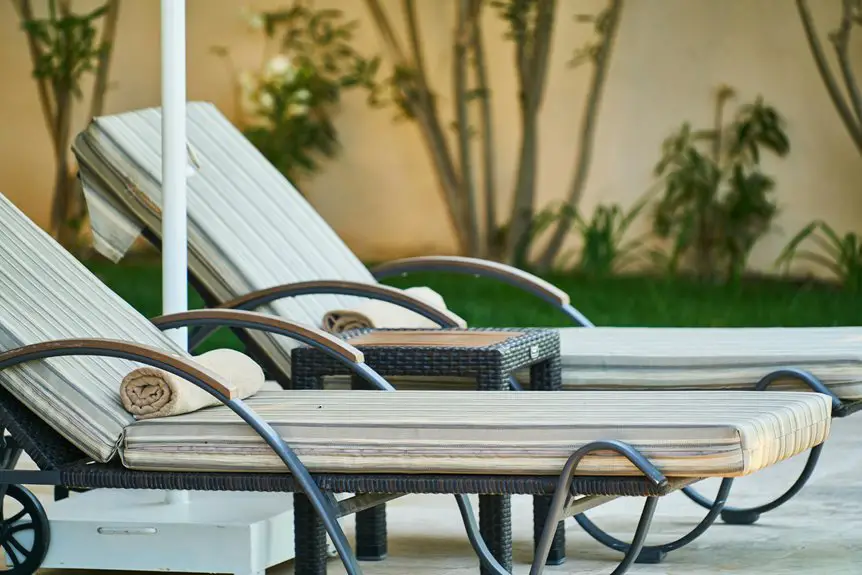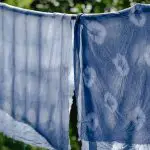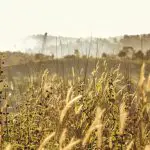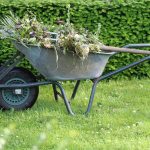You should put lawn fabric down before mulch if you want to cut back on weeds and keep soil moist around your plants. It’ll block weeds, save you time, and help hold mulch in place during storms. But be aware it can limit root growth and soil airflow, and might be tricky to remove later. If you want to understand how it impacts soil health and other weed control options, there’s more to discover here.
Table of Contents
Key Takeaways
- Lawn fabric under mulch effectively blocks weeds, reducing maintenance and time spent pulling unwanted plants.
- It helps retain soil moisture by limiting evaporation while allowing water and nutrients to pass through.
- Improper installation or fabric degradation can lead to weed growth and complicate future garden renovations.
- Lawn fabric may restrict root growth and reduce soil aeration, potentially impacting long-term soil health.
- Alternatives like thick organic mulch or biodegradable mats offer weed control without some fabric drawbacks.
Benefits of Using Lawn Fabric Under Mulch
While mulching alone can enhance your garden’s appearance, using lawn fabric underneath offers several key benefits that you mightn’t want to overlook.
First, it acts as a strong barrier against weeds, reducing the time you spend pulling unwanted plants.
It creates an effective weed barrier, saving you hours of tedious pulling and maintenance.
You’ll also find that it helps retain soil moisture by limiting evaporation, which means your plants get consistent hydration and you can water less often.
The fabric allows water and nutrients to pass through, so your plants still thrive without disruption.
Additionally, it helps prevent soil erosion by keeping the mulch in place during heavy rain or wind.
Potential Drawbacks of Lawn Fabric in Mulch Beds
Using lawn fabric under mulch offers many advantages, but it’s not without some potential downsides you should consider before installation.
For one, it can be tricky to remove once it’s covered with mulch, making future bed renovations more difficult. You might also find that it restricts root growth for certain plants, limiting their ability to spread naturally.
Additionally, some fabrics degrade unevenly, leaving behind fragments that can be tough to clean up. If you don’t lay it properly, weeds can sneak through edges or holes, undermining the fabric’s purpose.
Finally, improper installation may trap water underneath, potentially causing mold or mildew issues. Weighing these drawbacks will help you decide if lawn fabric suits your specific gardening needs.
How Lawn Fabric Affects Soil Health and Moisture
Because lawn fabric acts as a barrier between the soil and mulch, it directly influences how moisture moves through your garden beds. It can slow water penetration, which means your soil might stay drier than you expect. This affects root hydration and microbial activity, possibly reducing soil health over time. However, it also helps prevent mulch from mixing into the soil, keeping your beds tidy.
| Aspect | Without Lawn Fabric | With Lawn Fabric |
|---|---|---|
| Moisture Flow | Easy water absorption | Slower water absorption |
| Soil Aeration | Natural air exchange | Limited air exchange |
| Microbial Health | Thrives | May decline |
| Mulch Mixing | Mulch blends into soil | Mulch stays separate |
| Root Growth | Unrestricted | Potentially restricted |
Alternatives to Lawn Fabric for Weed Control
Lawn fabric can impact soil moisture and health, which makes you wonder if there are other ways to keep weeds at bay without affecting your garden’s ecosystem.
Luckily, you have several alternatives. Mulching thickly with organic materials like wood chips or straw blocks sunlight, preventing weed seeds from sprouting while enriching your soil as they decompose.
Thick organic mulches block sunlight, stop weeds, and nourish your soil as they break down.
You might also consider hand-pulling weeds regularly, which is effective and chemical-free. Another option is applying natural herbicides, such as vinegar-based solutions, but use them cautiously to avoid harming desirable plants.
Cover crops like clover can outcompete weeds and improve soil fertility.
Finally, landscape fabric alternatives like biodegradable mats offer temporary weed control without long-term soil disruption.
These methods help maintain healthy soil while managing weeds naturally.
Best Practices for Installing Lawn Fabric and Mulch
Although mulch alone can suppress weeds, installing fabric underneath it enhances its effectiveness and longevity.
Start by clearing the area of weeds and debris, then level the soil for a smooth surface. Lay the fabric tightly, overlapping edges by about 6 inches to prevent weeds from sneaking through gaps. Secure the fabric with landscape staples every few feet to keep it in place, especially around curves or slopes. Cut slits only where you’ll plant to avoid unnecessary openings.
Next, apply 2 to 4 inches of mulch over the fabric, ensuring full coverage to protect it from sunlight and wear. Regularly check for damage and replace fabric if tears appear.
Following these steps helps you create a low-maintenance, weed-resistant garden bed that lasts.
Frequently Asked Questions
Can Lawn Fabric Be Reused After Removing Old Mulch?
You can reuse lawn fabric after removing old mulch, but check for tears or damage first. If it’s still intact, you’ll save time and effort by laying it back down before adding new mulch.
Does Lawn Fabric Affect Earthworm Activity in the Soil?
Imagine rich soil teeming with wriggling earthworms beneath your garden. When you use lawn fabric, it can block their movement and reduce activity, so you’ll want to weigh mulch benefits against earthworms’ essential role in soil health.
How Long Does Lawn Fabric Typically Last Under Mulch?
Lawn fabric typically lasts 3 to 10 years under mulch, depending on material quality and exposure. You’ll want to check it periodically for tears or degradation to keep weeds at bay and maintain soil health effectively.
Can Lawn Fabric Be Installed on Sloped Surfaces?
You can install lawn fabric on sloped surfaces, but you’ll need to secure it well with stakes or pins to prevent slipping. Overlap edges and anchor thoroughly to keep it stable under mulch and weather conditions.
Is Lawn Fabric Safe for Pets and Children?
While lawn fabric seems harmless, it can pose risks if pets or kids chew or ingest it. You’ll want to choose non-toxic options and supervise play areas to keep everyone safe and your garden thriving.
- Should I Put Lawn Fabric Down Before Mulch - June 16, 2025
- Is Soft Woven Lawn A Knit Fabric - June 16, 2025
- Is Lawn Fabric The Same As Batiste - June 16, 2025







